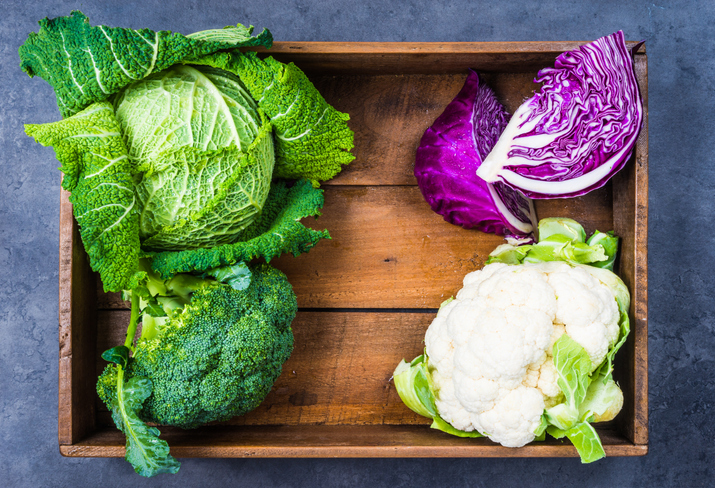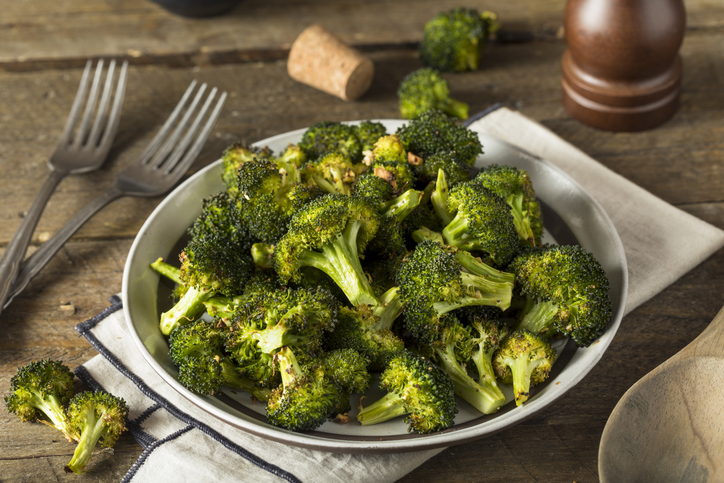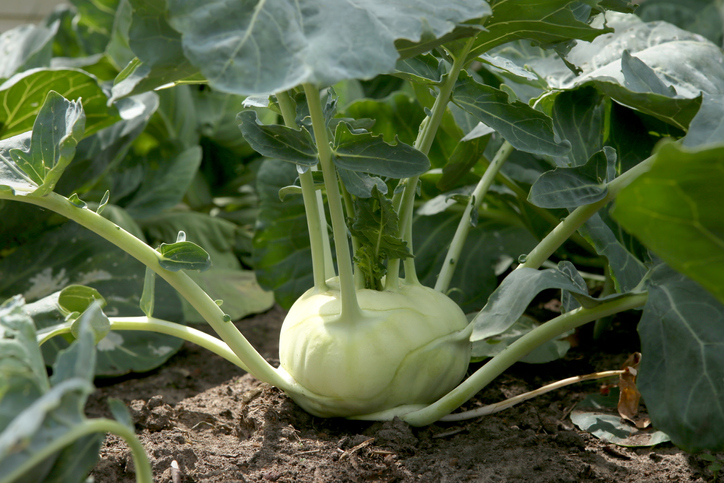
Produce 101: Cruciferous Vegetables
Produce 101: Cruciferous Vegetables
Here, Dan talks about cruciferous vegetables–a vast category, also known as Brassica. Here’s the basics you need to know to get started.
History
Cruciferous, or brassica, vegetables are an amazingly diverse group of vegetables, ranging from stalky and bud (undeveloped flower) items such as broccoli, to leafy greens such as arugula and even root vegetables such as turnips. Horseradish somehow fits in the category too! The name cruciferous refers to the flowers these plants produce, a four petal bloom that resembles a cross, or crucifer. The flavors range from mild to extremely pungent, they can be used raw or cooked and all are known to be nutritional powerhouses.
Common Trait
The one thing all cruciferous vegetables have in common are sulfur producing compounds called glucosinolates. Proper cooking and preparation can alleviate the pungent smell that some people associate with this group of vegetables.
So, if you remember back when you were young and your parents cooked Brussels sprouts in boiling water on the stove and that wonderful aroma filled up the house, that’s the sulfur compound breaking down.
How to Avoid the *Problem* with Cooking Cruciferous
So, what are some better ways to utilize this great family of vegetables? Well, with the leafy and bud plants–roasting, grilling, and even sautéing neutralizes that sulfur compound and brings out a nice nutty flavor enhancing the the natural sweetness of the vegetable. Turnips need to be roasted or braised because they’re a hard root vegetable but still in the family. Better yet, if you’ve got the greens from the turnips cook those with a little bit of bacon and onion for a great side dish.
Horseradish, you may only see in jars… but it’s actually a root vegetable. We grind it up, and the more we grind it the hotter it gets. So how do we stop it–add a little vinegar to slow it down.

Produce 101: Cruciferous Vegetables — Storage and Handling
Storage and handling vary as much as you might imagine, with some items being a bit more forgiving than others, but generally speaking, they can all be kept around 35° F. When looking at leafy greens and stalky/head forming items, make sure the cut root end isn’t browning and that the heads or buds are not yellowing. For root vegetables, make sure the root itself is free from decay and is firm and dense to the touch.
Most cruciferous items do have a USDA grade, though not all of them do. As with most items, the standards are based mostly on physical appearance and uniformity of shape, with the designation being mostly #1 or #2. Since the grade standard is more often than not based on appearance, if you’re processing the item instead of using it whole, the #2 grade may be a great way to save some money on your menus.

The Cruciferous Family is Vast, Here Are Some Common Members:
Click the hyperlinks to read more about each one
Broccoli Family
- Broccoli
- Broccoli sprouts
- Broccolini
- Brussels Sprouts
- Cauliflower
- Cabbage, Green
- Cabbage, Red
- Cabbage, Napa
- Cabbage, Savoy
- Caulilini
- Gai Lan
- Rapini
Leafy Greens
- Arugula
- Bok Choy
- Collard Greens
- Kale
- Mizuna
- Mustard greens
- Swiss Chard
- Tat Soi
- Turnip Greens
- Watercress
Root Vegetables
- Daikon Radish
- Horseradish
- Kohlrabi
- Radishes
- Rutabaga
- Turnips
Check out Dan in Produce 101: Cruciferous Vegetables
Contact your Sales Consultant about adding some of the many Cruciferous items we have to your next order. If you are not a customer, find out how to become one today!
Content provided by Chef Daniel Snowden, the Director of Culinary Development for FreshPoint Central Florida. He has been in the produce industry almost 20 years, and loves getting geeky about food. Additional contributions by Lisa Brizard.
Some tools you can use:
Visit freshpoint.com for our seasonal availability guides—and while you are there, check out the FreshPress, our latest market report. Place your orders online with ease at myfreshpoint.com. Did you know you can receive real-time reliable delivery alerts on the day of your delivery? Activate and subscribe at FreshPoint.com/mydelivery
Download our app and take your produce management on the go. Place orders, review flyers, watch videos…all in one spot!
Find out more details about our UBU program, and how we are shining a spotlight on food waste while making value and food safety a priority.
We buy local to strengthen regional economies, support family farms, preserve the local landscape, and to provide fresh-from-the-farm food to our customers. Local.freshpoint.com connects you to your local farmers like never before! Customize your search by zip, city, state, radius…even by crops and growing methods. Pop in your zip code and learn about our local farmers.
Socialize with us!
Did you know we are on YouTube? Head over to our page and check out our 75+ videos. Don’t forget to subscribe, and also be a part of our Bell Team—hit the little bell icon to get notifications when we upload new videos.
Follow FreshPoint, Inc. on Facebook, Twitter, Instagram, and LinkedIn…and follow The Produce Hunter on Instagram as she finds the best specialty produce at the Santa Monica Farmers Market.

